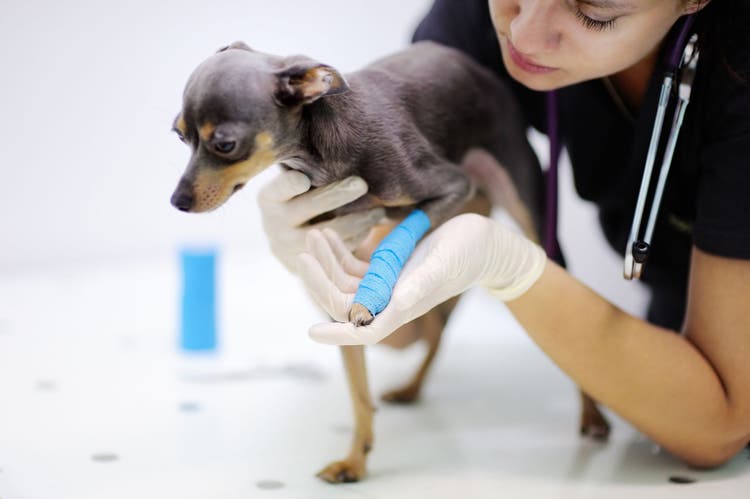
How to Get Lifetime Dog Insurance
Sponsored by Figo Pet Insurance
What Is Lifetime Dog Insurance?
Lifetime dog insurance is a term used to describe a pet insurance policy that will provide coverage for the rest of a dog’s life. Lifetime coverage is offered by some pet insurance providers and appears to be a term more commonly used in the United Kingdom. In the United States, many providers will include lifetime coverage in the policy by stating, “once a pet is enrolled, the policy won’t be canceled except in cases of non-payment.”
Can Your Dog Get Lifetime Insurance Coverage?
If your dog qualifies for pet insurance and you sign up with a provider that will continue your policy if you continue to pay the premium — then you can get lifetime pet insurance for your dog.
An important question to ask when you shop for pet insurance is if they can cancel you for any reason. If the answer is yes, then this provider will not provide you with lifetime dog insurance. If the answer is no, then they may. Please confirm these questions with potential providers prior to signing a policy.
How Much Is Lifetime Dog Insurance?
The cost of lifetime dog insurance will depend on several factors. The biggest factor will be the type of coverage you choose for your dog. There are several important terms to remember when shopping for the best lifetime dog insurance, including:
- Premium: This is the amount you pay to the insurance provider to insure your dog. You can often choose monthly or annual premiums. The pet insurance premium directly correlates to your deductible and your reimbursement (also known as a copay). Some providers offer discounts for paying annually or for automatic bank deductions for monthly payments.
- Deductible: This is the amount of the vet bill you must pay before insurance benefits start or “kick in.” It is important to understand that some providers have per-incident deductibles, while others have an annual deductible. An example of an annual deductible is a $500 deductible. Generally, once the deductible is met, the copay kicks in.
- Reimbursement (Copay): This is the amount of an eligible bill, after deductible, an insurance provider will pay back to you. Generally, you can choose your amount of reimbursement. For example, if you choose 100%, the pet insurance provider will cover 100% of an eligible bill after the deductible. If you choose, 90%, 80%, or 70% – the pet insurance provider will cover that percentage of an eligible bill. The more you want them to cover, the higher your premium will be.
- Maximum coverage limit: This is how much money an insurance provider will pay out per health issue, per year, or for a lifetime. Some may have a limit of $5,000 and others may have unlimited coverage.
- Waiting Period: This is the period you must wait for coverage to kick in, either in its entirety or for specific conditions or treatments.
- Exclusions: It is also important to understand what the pet insurance provider won’t cover. For example, pet insurance providers won’t cover pre-existing conditions.
- Coverage type: Most policies cover accidents and illnesses. Many providers offer add-on policies that also cover wellness visits or examinations.
Pet Insurance FAQs
Below are some common questions pet owners ask that will provide you with a better understanding of pet insurance while you shop for lifetime coverage.
When is the best time to get pet insurance?
The best time to get pet insurance is when your pet is young and healthy, so you’ll have coverage before a condition develops. For example, if your pet develops arthritis prior to your purchase of an insurance policy, the condition will be considered pre-existing and not be covered. Getting coverage earlier will help you get out ahead of any potential conditions that might come with age.
Are there limitations to how much a provider will pay for a claim?
This is an excellent question. Many providers have “maximum coverage limits,” which is the most they will pay out per health issue, per year, or for a lifetime. Some may have a limit of $5,000 and others may offer unlimited coverage. This is a question to ask when you sign up for your policy.
Important Questions to Ask a Potential Pet Insurance Provider
Ask these 3 questions to potential providers before you sign up for a policy:
- If I continue to pay my premiums on time, can you cancel the policy for any reason?
- What is your maximum coverage payout? Is it per health problem, per year, or per lifetime?
- What are the exclusions in the policy for my pet? Are there genetic exclusions? Are there pre-existing exclusions?
Additional Pet Insurance Articles:
- Compare and Contrast Pet Insurance Providers | PetPlace.com
- Pet Insurance: What It Covers | PetPlace.com
- 7 Tips for Choosing the Right Pet Insurance Plan | PetPlace.com
- How Are Pet Wellness Plans Different from Pet Insurance? | PetPlace.com
- Review Costs and Benefits of Pet Insurance for Indoor Cats | PetPlace.com
- Pet Insurance for Kittens | PetPlace.com